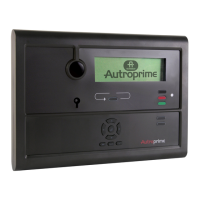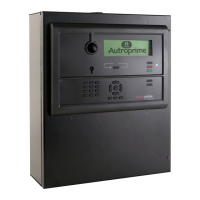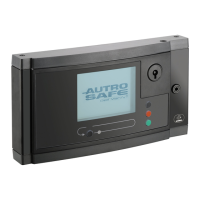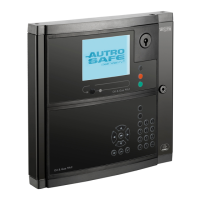Operation Mode
Operator's Handbook, Autroprime Interactive Fire Detection System, 116-P-APRIME-OPERATE/FGB Rev. B, 2009-10-28,
Autronica Fire and Security AS
Page 20
3.11 Alarm Organization
3.11.1 Detection Zones with Different Properties
When handling events in Operation Mode, it is important to be aware
of how the alarm organization is configured, that is, the system’s
detection zone configuration.
The system provides the following types of detection zones with
different properties:
Immediate Action detection zone
Dependency Action detection zone
Delayed Action detection zone
Delayed Dependency detection zone
SOLAS (Safety of Life at Sea) detection zone
The property of a detection zone as well as the type of point (detector
or manual call point) will determine how the system responds to the
signal - with respect to action.
3.11.2 The Actioning of Alarm Zones
The actioning of alarm zones can be controlled by detection zones,
with or without Delay/Dependency properties.
For example, a detection zone in alarm can activate a number of
alarm zones. The delay period before activation can be defined
according to the property of the chosen detection zone type.
An alarm zone can give both an alarm signal (EVACUATE) and a
neighbouring alarm zone signal (ALERT) with a different pattern.
The top-level alarm zone (default) is called the Parent Alarm Zone. A
system consists of a Parent Alarm Zone, usually with several “sub-
level” alarm zones in an hierarchy. Each “sub level”-alarm zone is
related to a specific area of, for example, a building. If an alarm occurs
in a Parent Alarm Zone, all Fire Alarm Devices (FADs) within this
zone, plus all FADs belonging to all “sub-level”-alarm zones will be
activated.
3.11.3 Immediate Action Detection Zones
A signal from an Immediate Action detection zone, will initiate all
actions immediately, without any delay.
Immediate Action applies to all units that can be activated by a
Immediate Action Detection Zone.

